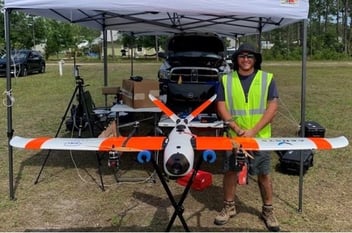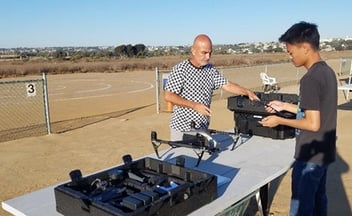Drone Safety 101
Unmanned aircraft systems, or drones, have become more and more popular in recent years as a means of business and fun. Unmanned Safety Institute is the leader in training and certification for remote pilots operating unmanned aircraft systems all over the world. The Federal Aviation Administration has made it acceptable for anyone who passes a written exam to fly heavy machinery at high speeds. This has the potential to be a major threat to public safety. A crashing 55 lb drone that is moving at 50 mph has the same amount of force as two grand pianos falling out of the sky! If you are a drone enthusiast or are pursuing your drone flight certification for business reasons, remember these safety precautions for a safe and enjoyable time flying your drone.
Only Fly in Good Weather
If you aren’t flying your drone in ideal conditions, it can do a lot of damage. Sunny weather with no unforeseen wind will not only let you fly your drone better but also help you keep track of it in the air. The wind is the largest culprit for poor flying conditions, so make sure that when you go flying there’s no wind.
Observe Your Line of Sight
Always fly in an area where you are able to see your drone at all times. Do not fly in an area that has the potential for you to lose sight of your drone. If you lose sight of it, you may end up crashing into something you couldn’t see and paying for the damage.
Steer Clear of Airports
Airports are a no-go for flying unmanned aircrafts. Drone collisions and other kinds of accidents are more common than one might think at airports. Collisions with birds are unavoidable, but planes are most certainly avoidable. Most drone apps, or drone safety guides list airports as a no-fly zone. The consequences could be costly, and in some situations, deadly.
Watch Out For Any Interference
Be aware of how physical and electromagnetic sources of interference could affect your ability to control your unmanned aircraft. If you are flying under a bridge, for example, it’s possible that your connection could drop or be intercepted. This, in turn, could cause your drone to trigger an unwanted function and crash, or impair your ability to control your drone.
Do NOT Fly Above People
When you set out to operate your unmanned aircraft, you have to be prepared for anything. A general safety guideline is to never fly above people because there’s always the risk of a crash, or a malfunction. Drones crashing out of the sky fall with incredible force and can cause severe injury, or even death. Don’t put innocent bystanders in danger, and make sure you fly in an area free of people.
Do NOT Fly Above 400 Feet
The higher you fly, the greater your chance of running into things like planes, birds, and hang gliders. To reduce the risk, make sure you change your course or fly below other flying vehicles if you see them.
Do NOT Fly Above Major Roads
Just like flying above people, you never know if your drone will crash, or malfunction. The last thing you want is to have your drone crash out of the sky into the middle of a busy freeway. This can cause a major accident and injure innocent drivers.
Do NOT Fly Above Military Bases
In 2017, the Department of Defense authorized military leaders to shoot down drones flying over defense bases and related military installations. Unexpected appearances by unmanned aircrafts are not welcome in military bases, and they are looked at as a potential threat. To avoid your drone being shot down, avoid flying above military bases.
Unmanned Safety Institute is the only organization in the world that has a sole focus on unmanned aircraft safety. Reach your full potential today through our professional drone safety certification programs.



